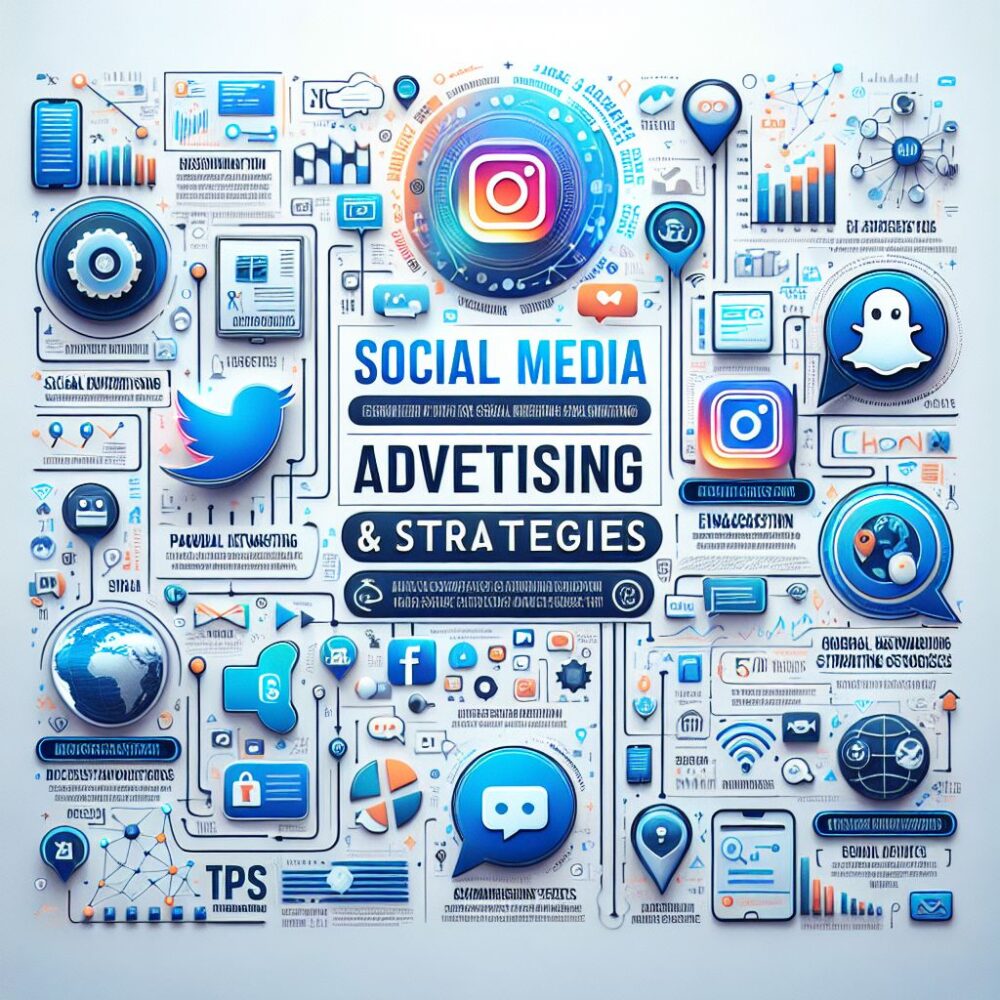Let’s explore what is ifluencer marketing and how you can utilize it for boosting your business…
Key Takeaways
- Influencer marketing is a powerful tool for brands to reach larger and more engaged audiences.
- Choosing the right influencer is crucial – they should resonate with your brand and have an engaged following.
- Authenticity in campaign messages can make or break the success of influencer collaborations.
- Measuring the success of campaigns is essential to understand the ROI and make data-driven decisions.
- Building long-term relationships with influencers can lead to more successful campaigns and brand loyalty.
Let’s talk about influencer marketing. It’s not just about getting a shoutout from someone with a million followers. It’s about creating a connection, a partnership that can take your brand from the sidelines right into the spotlight. And guess what? It’s not as complicated as it sounds. Stick with me, and I’ll show you how to make influencer marketing work for you.
What Is Influencer Marketing?
Influencer marketing is like having the cool kid in school show off your new sneakers. Suddenly, everyone wants a pair. In the digital world, influencers are the cool kids. They have the power to sway their followers’ opinions and purchase decisions simply by sharing content about your products or services. And why does this work? Because their followers trust them. They’ve built a relationship based on authenticity, and that’s worth its weight in gold.
“Influencer marketing is the modern word of mouth — it’s powerful, persuasive, and it’s here to stay.”
Why It’s a Game Changer for Brands
Think about it. Traditional ads can feel like someone yelling at you through a megaphone, but influencer marketing is like a friend telling you about this great new product they found. That’s powerful. It’s personal. And it’s why influencer marketing can be a game-changer for your brand. It’s not just about the exposure; it’s about making a genuine connection with an audience that’s ready to listen.
The Strategic Approach to Influencer Collaborations
Now, don’t just jump in without a plan. A strategic approach means you’re not throwing darts in the dark; you’re aiming with purpose. Let’s break it down.
Identifying the Right Influencers for Your Brand
First things first, find the right influencer. It’s not just about the numbers; it’s about alignment. The influencer’s values, interests, and audience should mirror your brand’s. This isn’t a one-size-fits-all situation. Sometimes a smaller influencer with a highly engaged niche audience is a better match than a celebrity with millions of followers but no real connection to what you’re selling.
Crafting Authentic Campaign Messages
Once you’ve found your match, it’s time to craft the message. This isn’t the time for a hard sell. It’s about creating content that feels natural and genuine. Why? Because authenticity is key. Influencer marketing works when the audience feels like they’re getting a real recommendation, not a scripted ad.
- Work with the influencer to create a story around your product.
- Keep the message true to both the influencer’s style and your brand’s voice.
- Encourage creativity and allow the influencer to put their own spin on the content.
Remember, the more natural the content feels, the more likely it is to resonate with the audience and lead to engagement.
Building Successful Campaigns
So, you’ve got the right influencer and a message that’s ready to go. Now, let’s turn that into a campaign that not only looks good but also gets results. A successful campaign is one that resonates with the influencer’s audience and aligns with your brand goals. It’s not just about a single post; it’s about a series of interactions that build a story your audience can follow and engage with.
Designing a Campaign That Resonates
Designing a campaign that resonates is about creating a narrative. It’s the difference between a forgettable ad and a memorable experience. Think about how your product fits into the lives of the influencer’s audience. What problem does it solve? How does it make their day better? Build your campaign around this narrative. When you focus on the experience rather than just the product, you create a connection that’s deeper than a simple transaction.
Measuring Campaign Success
Now, let’s talk numbers. Measuring campaign success is essential because, well, you need to know if your efforts are paying off. Are people engaging with the content? Is there an uptick in website traffic or sales? Set clear KPIs (Key Performance Indicators) before you launch the campaign, and use tools to track these metrics:
- Engagement rates (likes, comments, shares)
- Conversion rates (how many people took the desired action)
- Return on Investment (are you making more than you’re spending?)
By analyzing these numbers, you can get a clear picture of what’s working and what’s not, allowing you to tweak your strategy for even better results in the future.
Maintaining Long-Term Relationships With Influencers
One-off campaigns can be effective, but there’s something to be said for playing the long game. Building long-term relationships with influencers can lead to ongoing success for your brand.
Benefits of Ongoing Partnerships
Why keep the partnership going? Because trust and familiarity are powerful. When an influencer regularly features your brand, their audience starts to see you as part of the influencer’s ‘world’. This can lead to increased brand loyalty, repeat exposure, and ultimately, a stronger brand presence. It’s like being invited to the cool kids’ table not just once, but every day.
Best Practices for Influencer Relationship Management
So, how do you keep that relationship solid? Here are some best practices:
- Communicate openly and regularly with your influencers.
- Provide them with the support they need, be it product information or creative freedom.
- Show appreciation for their work, and give credit where it’s due.
- Be open to their feedback, and use it to improve future campaigns.
Remember, influencers are people too. Treating them with respect and valuing their input can go a long way in maintaining a successful partnership.
Real-World Success Stories
Still not convinced? Let’s take a look at some real-world success stories where influencer marketing made a huge impact.
Case Study: Brand “A’s” Viral Campaign
Brand “A” was a small fish in a big pond, but by partnering with the right influencer, they created a splash that rippled across the internet. They chose an influencer whose adventurous spirit matched their outdoorsy brand ethos. The campaign featured stunning visuals and authentic storytelling that captured the influencer’s experience with the product. The result? A viral campaign that boosted Brand “A’s” sales by 300% and significantly increased their social media following.
Case Study: Brand “B’s” Targeted Approach
Brand “B” took a different route. They targeted micro-influencers in the beauty space, focusing on those with highly engaged followers. The influencers created ‘get ready with me’ videos featuring Brand “B’s” products. This approach felt personal, like viewers were having a makeup session with their friends. The campaign led to a 150% increase in website traffic and a surge in product inquiries. By targeting the right influencers, Brand “B” reached their ideal customers in an authentic and engaging way.
Frequently Asked Questions
Got questions? That’s great! Questions mean you’re ready to get started but just need a little more info. Here are some of the most common questions I hear about influencer marketing:
How Do I Begin With Influencer Marketing?
Beginning with influencer marketing is like planting a seed. You need the right soil, water, and sunlight. Start by understanding your brand’s identity and audience. Then, research to find influencers who align with your brand values and have an engaged audience that matches your target demographic. Reach out with a personalized proposal that shows you’ve done your homework and you understand what they’re about.
Most importantly, be clear about what you’re asking for and what you can offer in return. Whether it’s product, payment, or mutual promotion, transparency is key to starting off on the right foot.
What Budget Should I Set for Influencer Marketing?
Setting a budget for influencer marketing can be a bit like setting a budget for groceries; it varies depending on your needs and appetite for growth. However, it usually costs less than traditional advertising. Small businesses might spend a few hundred dollars per post, while larger brands could spend thousands. Start small, measure your results, and adjust your budget as you go. Remember, it’s not always about the size of the investment but the quality of the influencer and the authenticity of the content.
Here’s a quick rundown of potential costs:
- Micro-influencers: $50 – $500 per post
- Mid-tier influencers: $500 – $5,000 per post
- Top-tier influencers: $5,000 – $10,000+ per post
How to Track ROI from Influencer Campaigns?
To track the ROI from influencer campaigns, you’ll want to use a mix of analytics tools and trackable links. Use unique promo codes and UTM parameters to see where your traffic and conversions are coming from. Keep an eye on engagement rates, reach, and the quality of the interactions. It’s not just about likes; it’s about comments, shares, and, ultimately, conversions. Most importantly, compare these metrics against your goals to determine if the campaign was a success.
Can Small Brands Leverage Influencer Marketing?
Absolutely! Small brands can, and should, leverage influencer marketing. It’s a level playing field out there, and sometimes being a smaller brand can work to your advantage. You can offer a more personal touch, and influencers may be more willing to work with you for a genuine partnership. Focus on micro-influencers who can help you reach a dedicated audience without breaking the bank.
What Are Common Pitfalls to Avoid in Influencer Marketing?
There are a few pitfalls you’ll want to sidestep:
- Choosing influencers based solely on follower count rather than engagement and fit with your brand.
- Lacking a clear contract or agreement that outlines expectations and deliverables.
- Not disclosing the partnership to the audience, which can lead to trust issues.
- Forgetting to measure results or ignoring the data you collect.
- Overlooking the importance of building a relationship with the influencer.
By avoiding these common mistakes, you’ll set yourself up for a more successful influencer marketing campaign.





Leave a Reply